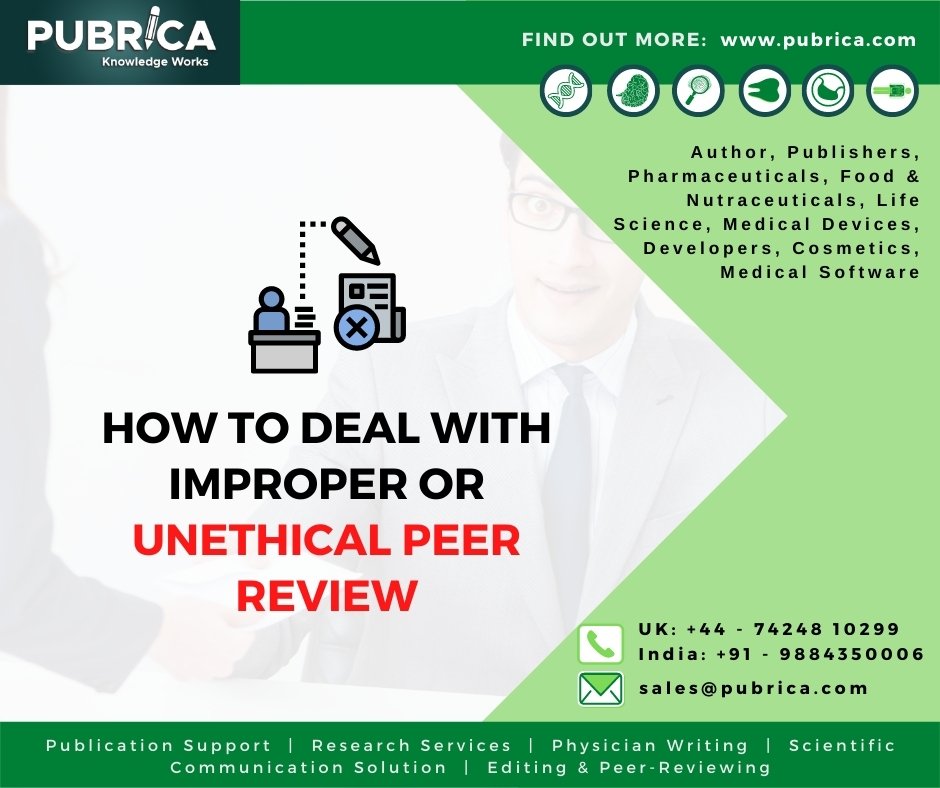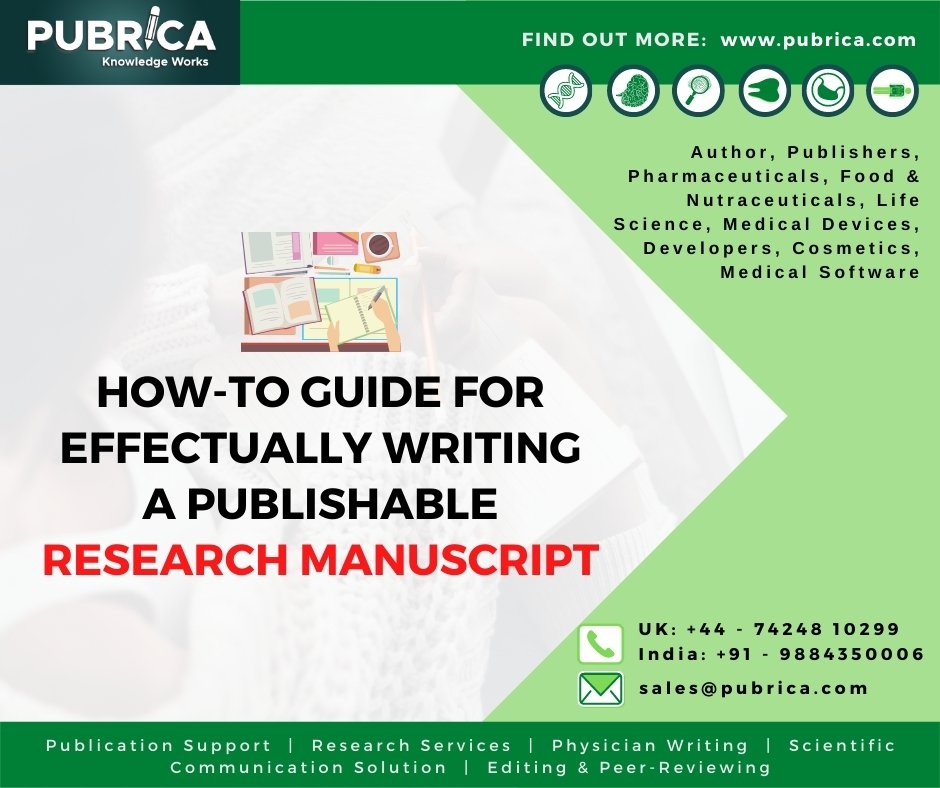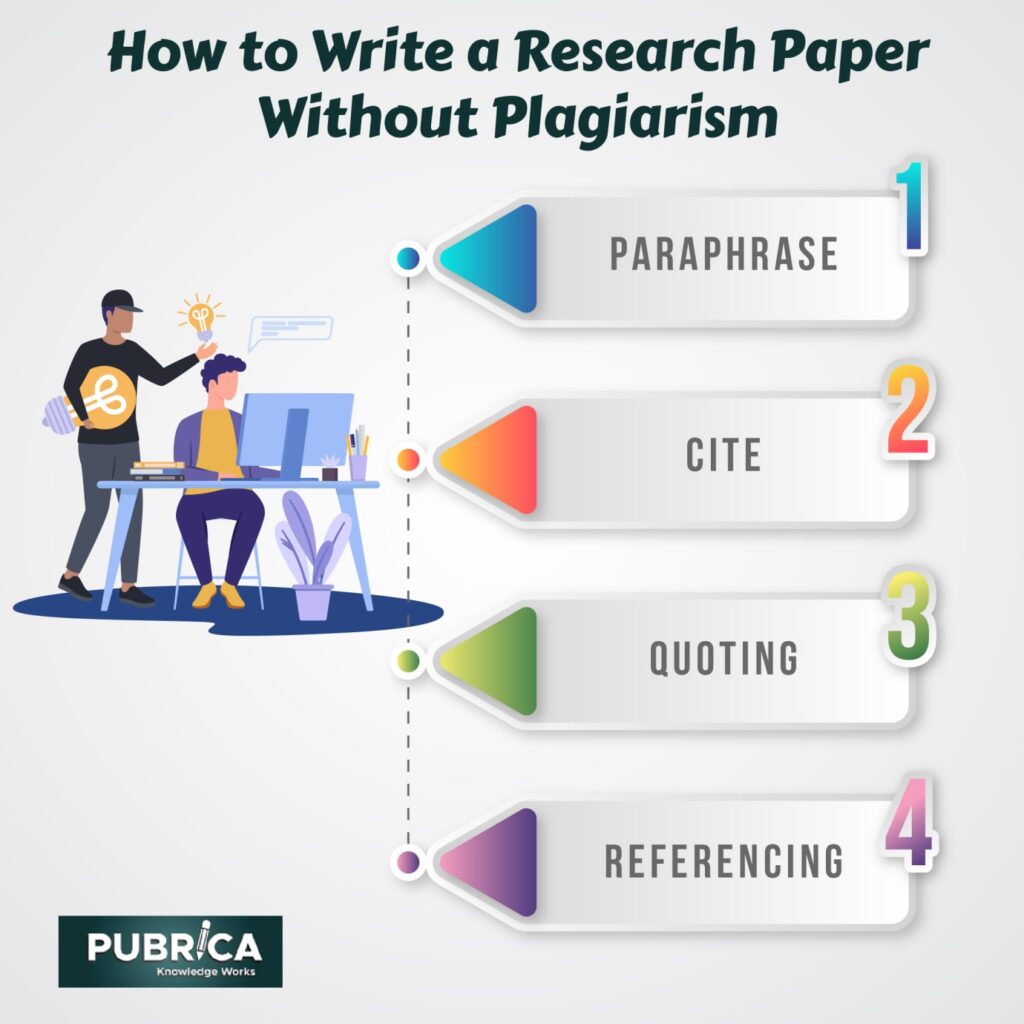
How to deal with improper or unethical peer review
September 8, 2021
How-to guide for effectually writing a publishable research manuscript
September 13, 2021In brief
A manuscript is a work of art. Any physician or academician harbours a secret ambition to get his or her work published in a peer-reviewed publication. In certain departments, writing has been considered a requirement for advancement, so clinicians are more likely to publish. This paper’s major goal is to address Plagiarism in the context of research and scientific writing. Plagiarism is getting more prevalent while generating any specific scholarly paper as personal computers have become more accessible to authors. The study also discusses the concept of Plagiarism and its many kinds and some helpful tips for avoiding Plagiarism and maintaining research integrity (1).
Introduction
Appropriately, digitalization has made copy-paste Plagiarism and improper reuse of source material from websites, online journals, and other electronic media more common. Plagiarism by students, professors, and research scholars is widely accepted “within academia, plagiarism by students, professors, and research scholars is considered academic censure, up to and including expulsion,” and researchers and professors are typically punished for Plagiarism with sanctions ranging from suspension to termination, as well as a loss of credibility and perceived integrity.

TYPES OF PLAGIARISM
- Deliberate Plagiarism – Plagiarism is the act of attempting to pass off someone else’s work as your own, and it is very unacceptable.
- Paraphrasing – Plagiarism of this sort is a little more calculated. It entails reading a few texts, jotting down a few important lines, rearranging the language, and sprinkling in a few quotes and citations to confuse your turgor.
- Self-Plagiarism – Self-plagiarism is when someone plagiarises his work. The author can combine his previous work with his current work to create a successful hybrid. But you can’t receive two grades for the same thing/work; therefore, even if you don’t realize it’s wrong, you can’t earn two grades. Plagiarism is still an issue.
- Mosaic Plagiarism: This form of Plagiarism does not entail copying every word but rather combining one’s own words with someone else’s thoughts and beliefs. This is a patchwork method of copying and pasting.
- Cyber Plagiarism: “Copying or downloading articles, research papers, and ideas from the internet in part or their full without giving due acknowledgement is unethical and falls under the category of cyber plagiarism.”
- Image plagiarism: Plagiarism is when you use a picture or video without getting permission or providing the correct reference. “Images may be tampered with to support results, favour one approach over another to reinforce the accuracy of poorly seen conclusions, eliminate image flaws, and mislead a picture.
How to write a research paper without Plagiarism
Plagiarism is an immoral, unfair, and dishonest action that many people are aware of, which is typically enough to deter us from committing it. Many techniques exist to avoid Plagiarism, but for those who use them, the results can be unpleasant; many experts have had their professional reputations ruined due to plagiarising.
There are a few easy methods to take while writing research papers to ensure that your content is plagiarism-free:
- Paraphrase: When you come across any accurate material for your research piece, read it first and then incorporate it into your own words. Make sure you don’t copy more than two words from the discovered text into a raw. When there are extra than two words in a row, quote marks are used.
- Cite: Citing sources might help you avoid plagiarising, following the document formatting requirements set out by your educational institution, such as the American Psychological Association (APA), Modern Language Association (MLA), and Chicago style. The authors’ names, as well as the publishing date or corrected information, are generally required. If you do not correctly credit your sources, you risk plagiarising.
- Quoting: Use the reference exactly as it is written. Nobody likes to be quoted incorrectly. “Block quotes” or references of 40 words or more are frowned upon in most higher education societies. The majority of content should be able to be dramatically paraphrased by a pupil. To avoid accusations of Plagiarism, the citation must be completed accurately.
- Referencing: It is necessary to include a reference page of works after your research paper. This page serves as the document formatting guidelines utilized by your research institutions in some cases. The author’s name, publication date, title, and source are all included in the citation. Follow the instructions to obtain the correct reference (2).
How to use an online Plagiarism Checker
A search of the Internet indicates that there is more concern about cheating among students than among faculty. When the title was scan, 90% of the article dealt with students and the detection method of Plagiarism. This lack of articles could indicate either there is little Plagarism among faculty or unwilling to admit it. The most way to detect Plagiarism is to use available online tools, mainly software and online Plagiarism Checking Services. Here some of the most widely used Plagiarism Detection and Prevention tools. –
- ‘Mydropbox’ provides Safe Assign. Safe Assign is based on a proprietary text-matching algorithm that can discover precise and inexact matches between submitted papers and source material. Students’ submissions to Safe Assign are evaluated against a variety of sources, including:
- Document Archives in Institutions.
- Database of International Reference
- Database of Pro Quest Journals
- Internet Security Assign a system that can detect both locally and via the Internet.
- Docolc- Institut für Argewandte Lentechnolgien supplies this Internet service (IFALT). This plagiarism detection software looks for text fragments that are also present in other works. Documents will be uploaded to Docolc for a thorough examination by a software programme and a huge database. As a result, you may encounter Plagiarism, copyright infringements, quotes, or other web-based document sources (3).
How to Deal With Plagiarism
Plagiarism is a form of intellectual dishonesty and a violation of academic ethics. Plagiarism is not a crime in and of itself, but it can lead to copyright infringement. It is a major ethical violation in academics. Plagiarism is sanctioned by institutions rather than by the law. Authors can make aspect authorizations, suspensions, and even expulsion from professional groups, educational institutions, and publishing firms.
“If editors suspect wrongdoing by authors, reviewer’s editorial staff, or other editors, they should take action,” according to the COPE standards. This requirement applies to both published and unpublished articles. The editors first look at the accused’s answer. Suppose the editors are dissatisfied with the answer. In that case, they should inquire about it with the authors’, reviewers’, or editors’ employment, or any other relevant body.” If the editor believes Plagiarism has occurred, the least action he should take is to “reject” the submission if it is still in the editorial process, or “retract” if it has already been published.
Finally, we must raise awareness among our scientists and authors regarding plagiarism and ethical concerns. We must be truthful in our work and not break copyright laws. Authors should face significant consequences, including contempt and perhaps the loss of their academic post (4).
References
- Dhammi IK, Ul Haq R. What is Plagiarism and how to avoid it?. Indian J Orthop. 2016;50(6):581-583. doi:10.4103/0019-5413.193485
- Soni, Ganesh Kumar. “Plagiarism Detection and Prevention: A Study.” International Journal of Library & Information Science (IJLIS) 7.1 (2018).
- Nirmala, S., and R. Jayaraman. “Plagiarism: Types and Checking Tools.” Biotica Research Today 2.6 (2020): 515-518.
- Pun, Min. “Plagiarism in Scientific Writing: Why It Is Important to Know and Avoid.” Journal of Political Science 21 (2021): 109-118.
